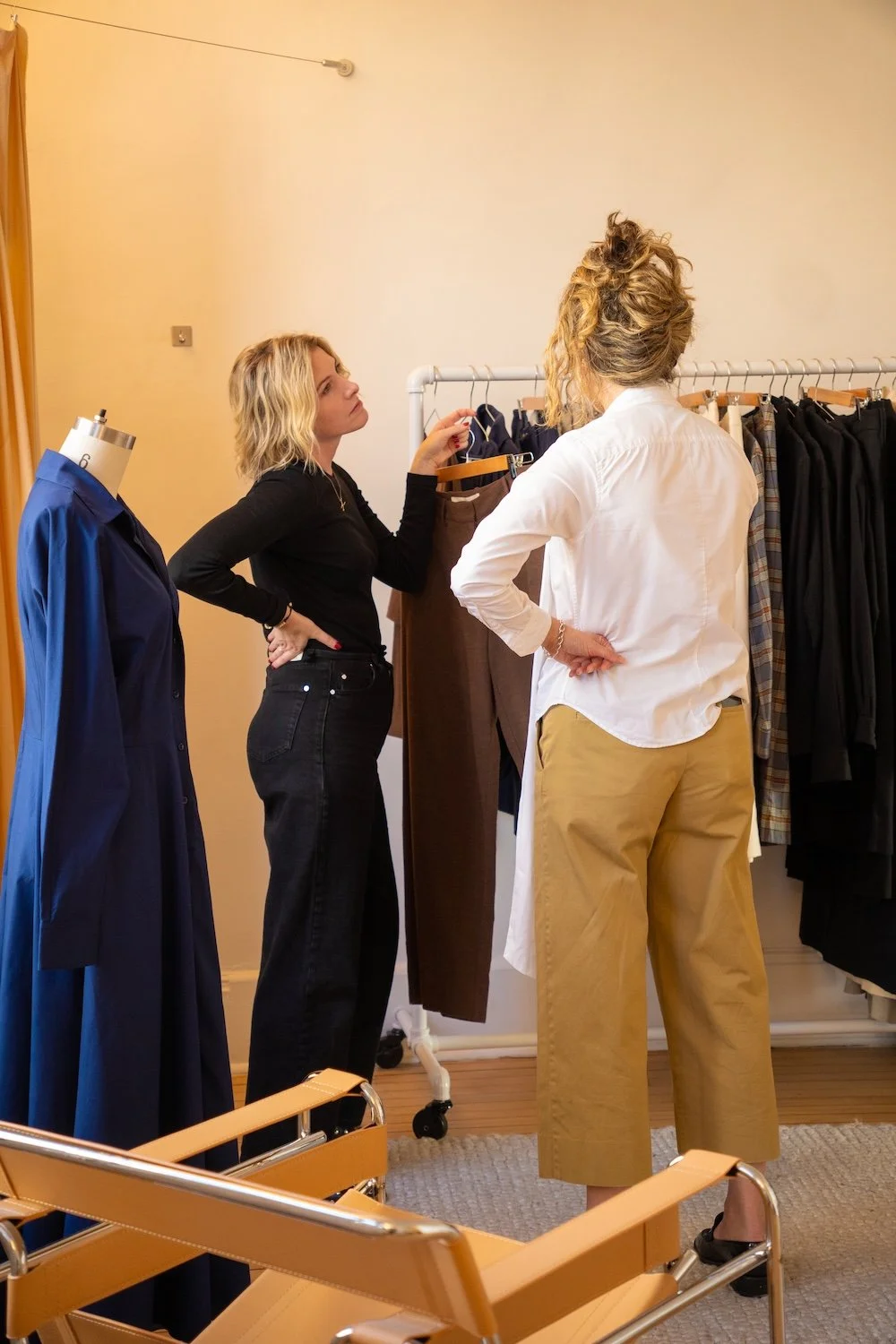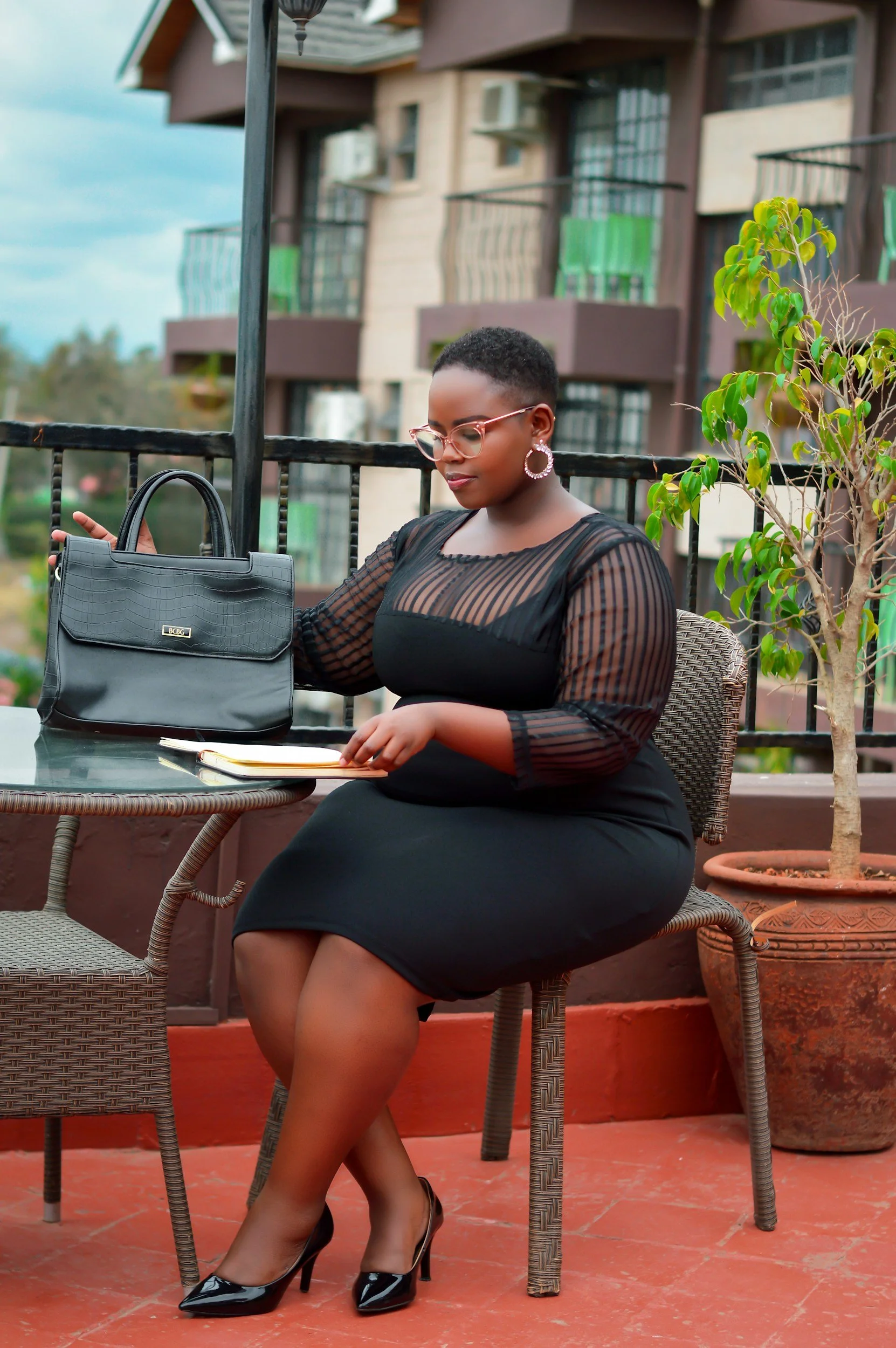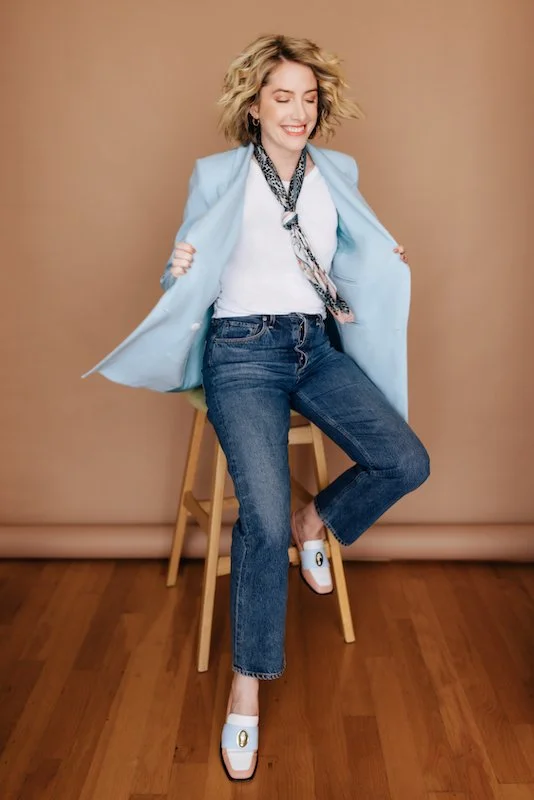A Professional Woman’s Guide to Hiring a Personal Stylist: When to Start and What to Look For
Personal styling isn’t just for celebrities or socialites. It’s for anyone looking to align who they are with what they wear.
For decades, personal stylists were considered a luxury reserved for celebrities or red-carpet events. But today, personal styling is increasingly recognized as a transformative tool for everyday people looking to feel more confident, aligned, and intentional in their wardrobes.
Working with a personal stylist isn't about chasing trends or achieving perfection—it's about learning how to show up in clothes that reflect who you are and support where you're going. Whether you’re returning to in-person work, navigating a life transition, or simply feeling stuck in your style, a stylist can offer clarity, strategy, and confidence.
Let’s break down what a personal stylist really does, how to know when it’s time to bring one in, and how to find the right fit for you.
Personal Stylist in New York
The Real Role of a Personal Stylist
The styling industry has grown exponentially in recent years, but so has confusion about what a personal stylist actually does. Between fashion influencers, image consultants, and department store personal shoppers, the lines can get blurry.
Here’s a breakdown:
Fashion Stylists typically work in editorial or entertainment, styling models and celebrities for shoots or events.
Wardrobe Stylists is a more fluid term—sometimes referring to costume styling for TV/film or personal styling, depending on context.
Personal Shoppers usually work for a single brand or store, helping you buy from their inventory.
Image Consultants often focus on professional presence, grooming, and etiquette, working with politicians or executives.
A personal stylist, however, supports real people with their everyday wardrobes. They help you build a closet that reflects your identity, values, lifestyle, and goals. This can include:
Editing your current wardrobe
Developing a strategic shopping plan
Teaching you how to mix and match outfits
Defining your personal style language
More than anything, they help you bridge how you feel on the inside with how you present yourself on the outside.
NYC PERSONAL STYLIST
How to Know If You’re Ready for a Stylist
You don’t need to hit a milestone or be in crisis to benefit from personal styling. But there are some clear signs that you might be ready for style support.
1. You have a full closet but nothing to wear.
You’ve bought the clothes, but they aren’t working together—or they don’t feel like you. If you’re staring into your wardrobe each morning and still feel lost, that’s a sign that what you own lacks intention or alignment.
2. You’re in a season of transition.
Style often lags behind life. Whether you’ve had a baby, started dating again, landed a new job, moved cities, or experienced a body change—your wardrobe might not be keeping up. A stylist can help you recalibrate.
3. You feel decision fatigue.
Shopping feels overwhelming. Trends move too fast. And dressing feels like another chore rather than a form of self-expression.
4. You want to shop smarter.
Whether for budget, sustainability, or simplicity, you’re craving a more intentional and streamlined approach to clothing. Stylists help you focus on quality, versatility, and longevity—not just more stuff.
5. You want to feel like the best version of yourself.
You like your style… mostly. But something always feels a little unfinished or inconsistent. You’re not trying to reinvent yourself—you just want more clarity and polish.
NYC PERSONAL STYLIST
What to Expect from the Wardrobe Styling Process
Styling isn’t just about pretty outfits—it’s a collaborative, often introspective process that touches on identity, confidence, and function. A strong stylist works across three pillars:
Closet: Assessing what you already own, editing what’s no longer serving you, and identifying key gaps.
Shopping: Creating a strategic list based on your needs, goals, lifestyle, and budget.
Styling: Teaching you how to wear what you have, mix and match pieces, and create consistent, effortless looks.
Some stylists lean more visual; others focus on emotional or strategic approaches. But the goal is the same: to help you feel like yourself—more clearly, confidently, and consistently.
NYC PERSONAL STYLIST
Common Misconceptions and Mental Blocks
Many people hesitate to work with a stylist because of internalized beliefs or outdated ideas. Let’s unpack a few:
“I should know how to do this by now.”
Style isn’t innate—it’s a learned skill. You’re not expected to just know how to dress for every season of life. A stylist helps you learn.
“I can’t afford it.”
It’s true: working one-on-one with a stylist is an investment. But many clients actually save money long term—by avoiding impulse buys, returns, and unworn pieces. It’s about smarter spending, not more spending.
“I have no style.”
If you’re putting on clothes, you have a style. A stylist helps you define it more clearly—and show up in it more consistently.
“I’m embarrassed to show my closet.”
Stylists have seen it all. There’s no judgment—only support. It’s not about cleaning your closet for someone; it’s about moving forward with intention.
NYC PERSONAL STYLIST
Virtual Wardrobe Styling in a Post-COVID World
Virtual styling is here to stay—and it works. From digital closets to video consults and curated shopping links, many stylists now offer robust remote options.
What’s needed on your end? A little extra collaboration. You’ll likely need to upload wardrobe photos, complete intake forms, and share inspiration. But a good stylist makes the process feel just as personal and connected as an in-person service.
This is especially helpful for:
Clients outside major metro areas
Busy professionals with unpredictable schedules
People who prefer ongoing but lower-touch support
Virtual services (like the BU Style Circle membership) also offer a more affordable entry point for those not ready for one-on-one packages.
PERSONAL STYLIST NEW YORK
Finding the Right Stylist for You
Working with a stylist is a deeply personal experience—so finding the right fit matters. Here’s what to look for:
1. A Clear Process
Does the stylist have a defined method or are they winging it? Do they focus on trends or on helping you understand your style?
2. Client Alignment
Do they regularly work with clients who share your stage of life, goals, or identity? Check their testimonials and case studies.
3. Communication & Energy
You should feel heard, not hustled. Look for someone who asks thoughtful questions, listens well, and feels like a safe space—not someone selling you a makeover.
4. Training & Experience
Styling is unregulated, so experience can vary. Ask about their background—fashion school, retail, image consulting, psychology, etc.—and how they apply it to support clients like you.
5. Pricing Transparency
Do they work on commission, charge hourly, or offer packages? Do they disclose affiliate relationships? Know what you’re paying for—and why.
6. Their “Why”
Do they post thoughtful content? Are they educating or just posting outfits? Are they empowering others or performing style? You can learn a lot by reading between the style lines.
📚 Read more on how to find the right stylist in this article, “Thinking About Hiring a Personal Stylist? Ask These 10 Questions First”
NYC PERSONAL STYLIST
Styling as a Tool for Personal Transformation
At its best, personal styling is not about looking different—it’s about feeling more like you. It’s about standing in your closet and not sighing. About walking into a room and not questioning your outfit. About letting your clothes support you, not distract from who you are.
Whether you’re leading a team, going through a life change, or just tired of the endless scroll of shopping apps and trend cycles, style clarity is life clarity. And styling support can be one of the most affirming things you do for yourself.
Ready to Explore? Here’s How to Start with a Personal Stylist
If you're feeling the pull to work with a personal stylist but you're not sure how to begin, try one of these low-pressure first steps:
Explore stylist memberships. Programs like BU Style Circle offer seasonal guides, shopping tips, and community support at a lower price point than full-service styling.
Follow a few stylists online. Pay attention to whose tone, process, and energy resonate with you.
Book a discovery call. Most stylists offer complimentary intro calls. Treat it like a two-way interview.
Reflect on your goals. Ask yourself: What do I want my clothes to do for me? How do I want to feel when I get dressed?
You don’t need to have it all figured out to begin. You just need to be open to support.
Personal styling isn’t about chasing someone else’s idea of beauty—it’s about becoming more aligned with who you already are. And if you’re ready for that next chapter, there are experts who can walk beside you, every step of the way.




